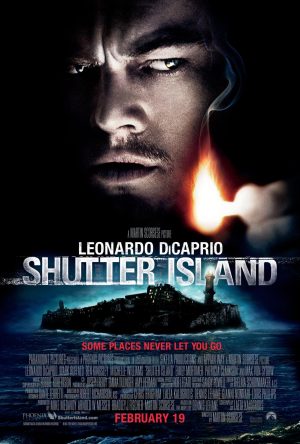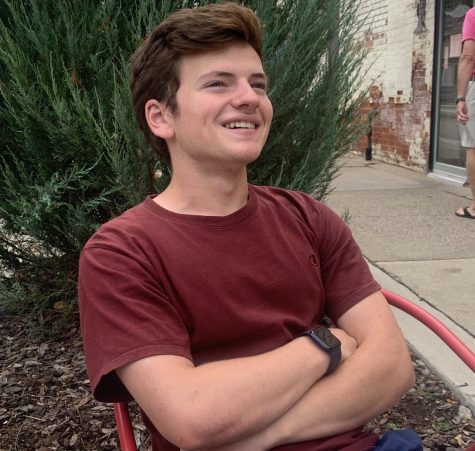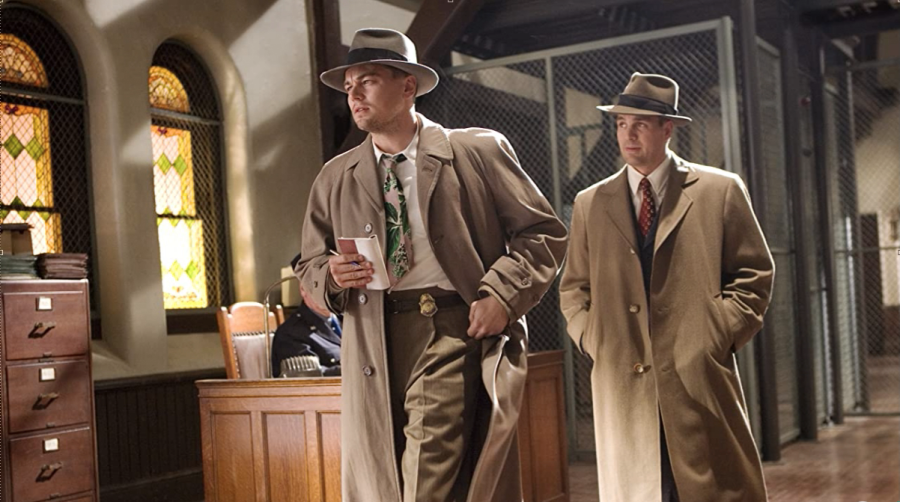Notebook: “Shutter Island”
Shutter Island tells the story of a U.S. Marshal who investigates the disappearance of a patient at a psychiatric hospital. As the story progresses, the narrative takes peculiar turns into unexpected territories.
“Shutter Island” was primarily filmed in Nahant, MA. Scenes in Ashecliffe were shot in the old Medfield State Hospital, while scenes depicting flashbacks to World War II were filmed in Taunton’s Whittenton Mills Complex.
Spoiler warning: This review contains spoilers for “Shutter Island.”
“Shutter Island” is a 2010 psychological thriller directed by Martin Scorsese, based on the novel written by Dennis Lehanne in 2003. Set in 1954, the film stars Leonardo DiCaprio as U.S. Marshal Teddy Daniels, who is sent to investigate the disappearance of a patient at a psychiatric hospital for the criminally insane. Ashecliffe, the hospital, is located on an isolated island. Throughout the film, Daniels’ intentions of investigation become unclear, as do the purpose of Ashecliffe. What seemed to be a simple story of two U.S. Marshals searching for a patient drifts towards an unknown narrative. Daniels reveals to his partner—Chuck Aule, played by Mark Ruffalo— that he secretly took the mission to find Andrew Laeddius, the killer of his wife who was supposedly on the island. When Daniels learns there is no ferry he can take to leave the island, he starts to think he was set up in a trap. The doctors on the island seem to be hiding information from Daniels and mitigate the disappearance of their patient. These subtle hints throughout the movie lead viewers to question the secrets of Daniels and Ashecliffe. If Chuck Aule is a U.S Marshal, why did the film emphasize his struggle to remove a gun from his holster? Why did the policemen on the island sit around and not search for the missing patient? Why did Aule disappear when Daniels needed him most? Why did some of the patients seem to be frightened of Daniels? 
At the end of the movie, it is revealed that Teddy Daniels isn’t who we thought he was: he was a delusional patient named Andew Laeddius who’d been located at Ashecliffe for the last two years. Daniels developed schizophrenia as a result of his traumatic past: his World War Two experiences as a marshal and the murdering of his children by his wife. What Daniels and the audience had believed to be an investigation was actually an experiment conducted to help Daniels free himself of his manic delusions. Everyone on the island was playing a role to help Daniels cope with his dark past. The doctors believed that by completely submerging Daniels into his own fantasy, he would get a sense of reality and come to terms with his deep-rooted emotional trauma.
Throughout the movie, you are the detective to the film as Daniels is to the island. Every few minutes, an odd conversation or mysterious scene makes you reconsider what you think you know about Daniels and Ashecliffe. At times, I felt as if “Shutter Island” was meant to seem esoteric. I felt like the story was only meant to be understood by a select group of movie-enjoyers who made a deeper connection to a plot that went over my head. The revelation of Daniel’s situation made the story come full circle for me in a way I had never experienced before. Without seeing the ending for myself, I never would have predicted that Daniels was a patient indulged in his own fantasy. When I connected the dots and thought about all the mysterious events that didn’t make sense, I reached my own internal apotheosis that filled the last piece to a puzzle. It was a puzzle piece I never would have found on my own without finishing the movie. I felt as if a miracle antidote or holy grail was created to answer all of my initial confusions and questions about the story. It was the perfect twist of falling action to conclude every mystery of the plot.
Every significant character in “Shutter Island” has a role to portray that can’t be understood before Teddy Daniels’ reality is revealed. Each actor has an incredibly complicated task that you can only appreciate watching through a second time: the duality of a character playing a character. When you first watch the film, you see Ruffalo play the role of a U.S. Marshal who seems to have a couple secrets up his sleeve. When you rewatch the film, you watch Ruffalo play the role of a psychologist doing everything he can to help his patient of two years cope with his past. Instead of seeing patients and doctors, you see people doing their best to follow instructions and treat Daniels as a marshal.
The complexity of the perceived story told to the viewers is also embedded in the cinematography. In the opening scene of the movie, Daniels introduces himself to Aule on a ferry before arriving at the island. Because it is part of the opening scene, this conversation is easy to neglect or forget. But why would partnered U.S. marshals on an investigation only introduce themselves to each other after spending hours together on a ferry? Policemen tense up when Daniels walks close to them. When first watching, this seems to be because there is a secret on the island to be kept from the U.S. Marshals. But in reality, the policemen are scared of Daniels because they know him as a neurotic patient with a capacity for violence.
Throughout the entire film, fire and water are direct metaphors for Daniels’ life across disciplines. Water symbolizes reality. Whenever water is present, the film points towards truth. Water is representative of reality because Daniels doesn’t take full responsibility for the death of his kids who were drowned. Fire symbolizes the fantasy Daniels lives in. Whenever fire is present, Daniels is hallucinating or deeply engaged in his false persona. Daniels tells himself his wife died in a fire, when in reality, he killed her.
As a first-time viewer, everything about this movie felt perfect: the cinematography, subtle imagery, eerie atmosphere, ominous music, astounding acting, constant change of events and the revelation of Daniels’ reality. Nothing could’ve drawn me away from my TV for the two hour and 16 minute film.
“Shutter Island” is one of my most memorable movie experiences of all time. I highly recommend this film to anyone who enjoys mind-bending twists, psychological thrillers or a good investigative story.




